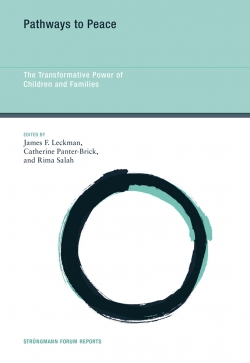The Power of Media in Peacebuilding
The Power of Media in Peacebuilding
Complexities of Conflict: The Classical Approach to Conflict
It is no longer safe to assume that peace is preferable to war. Protagonists may use mass media which may be under their control to maintain and manipulate conflict and vested economic interests can create and prolong conflict.
Identity Politics and Manipulation of Identities
The act of identifying politics is constructed through war. Identity can easily be manipulated, particularly for large groups, to inflame group’s shared feelings about themselves and their enemies. It also plays a role in negative stereotyping and creates an atmosphere tolerant of violence toward the outgroup. Threats to the identity of a large group can create shared anxiety and may lead to societal regression, the weakening of individuality putting more focus on us vs. them, including justification of violence to maintain the group identity. It is possible that building the strength of core identities within a group will create a stronger more resilient core in the larger group and less vulnerable to fear and manipulation and not engage in conflict over perceived threats to the large group identity. Additionally, to what extent is it possible to regard another large group with respect and without fear of one’s own group feels weak and vulnerable?
Importance of Secure Attachment
One way to build strong core identity and strong sense of security, resistant to us-versus-them manipulation, is through a secure attachment base. Secure attachment in early childhood linked with recognition can lead to empathy, and may also be linked to large group identity to overcome prejudices and negative stereotyping. Recent research shows that a secure base is a necessary condition for peace-seeking leaders.
An Example of Role Models
Beyond Violence, a peace-teaching film about a former Israeli fighter and former Palestinian fighter coming together to be leaders in the “Combatants for Peace” movement, demonstrates the importance of strong, secure attachment that each character each had to their parents, both in youth and continuing through adulthood. Secure attachment gave them the ability to be self-aware and courageous enough to seek out peacebuilding.
Opportunities to Promote Prosocial Behavior in Young Children
The Sesame Workshop in US and Palestine focuses on building self-esteem and strong core identity as well as other cognitive ability by positively displaying characters similar to children in a positive light. For example, displaying Palestinians as agents for good rather than victims or perpetrators, as seen in the media frequently. Stereotyping increases when starting to attend school, showing powerful influence of community and institutions. Media is an excellent source that can be used to change negative stereotypes, even if relations between groups have not improved. The Sesame Workshop programs are child-relevant and age appropriate as it builds curriculum that develops messages and characters in detail, engages in formative research from beginning of production and test episodes with children and adults, and never allow images that model inappropriate (ex. dangerous or aggressive) behavior.
Empowering Children and their Parents to be Global Citizens
Panwapa is a worldwide initiative developed by The Sesame Workshop based on the Global summit on Promoting Respect and Understanding among Children through Media. Social networking sites as well as DVDs and board games, also address teachers and caregivers while engaging children through interactive games and tasks with peers from around the world. Such games promotes self-esteem, awareness, and appreciation of individual differences, while also promoting a sense of agency and awareness of impact.
Internal Reinforcement
It is important to reach parents and caregivers, as children learn to handle conflict by participating in parent-child conflicts and observing parent-parent conflicts. We should look to reinforce the system of mutual support for children, caregivers, and the community focusing on building secure attachments. Such programs need to provide a safe space for children, offer support for caregivers and parents, and be responsive to the needs of the community, providing support when appropriate. The media can contribute to triadic mutual reinforcement by delivering info aimed directly at children as well as directly or indirectly at caregivers and the community.
Ways in Which Media Could Promote Peacebuilding
As previously mentioned, media, social media in particular, allows for discussion, sharing of experiences, and support for caregivers and communities. Teaching films can help caregivers and preschool teachers build secure attachment and self-esteem in children by modeling correct child care practices in situations of violence by combining education with entertainment. Another method could be interactive therapy via media, the use of television and internet to support the delivery of live and recorded therapy sessions.
Partnerships: Universities, Practitioners and the Media
Research based on partnerships between universities, practitioners, and media outlets are to be used to monitor media messages and their impact. This also creates a secure base in children to allow self-esteem and courage necessary to reach across identity boundaries and act inclusively to build global multicultural communities based on reciprocal respect and dignity.
Pathways to Peacebuilding: A New Model
Mutually reinforcing ECD programs and age-appropriate educational media, children, caregivers, and local communities form interlocking secure base which then forms secure large group identity. Group identity withstands outside threats and violence, less susceptible to us vs. them mentality and continues to become secure if protected by laws, campaigns, ECD programs, and reinforced by educational media. Academic research should be used to assess the impact of programs, laws, campaigns and can offer adjustments when necessary and can assist in developing positive perceptions of other groups, in turn causing them to be less susceptible to fear, mistrust, prejudice, and media manipulation. Once peacebuilding has been established, large group identity is now so secure, they are able to fully recognize each other’s humanity while also acknowledging the group’s differences.
JOIN THE CONVERSATION
For breaking news and to stay connected, follow us on social media. Sign up to get our E-News delivered straight to your inbox.

